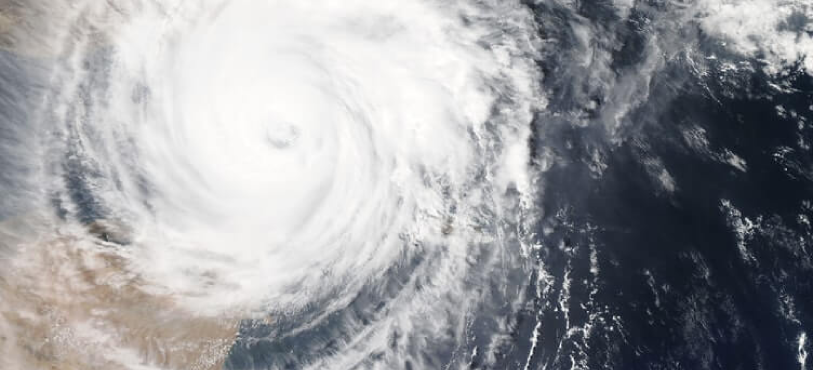29 Nov 2023
INDIAN COASTS AND MONSOON CLOUDS BECOMING A STAR-CROSSED LOVE STORY?

Indian Coasts and Monsoon Clouds Becoming A Star-Crossed Love Story?
The love for monsoon and the dark cloudy sky is innate to every Indian. From poems to films, novels and music rain continues to shower down in beauty. But in reality, is the monsoon and India playing two unrequited lovers? Over the past couple of years, India has been witnessing a drastic dip in terms of rainfall. According to the statistics, the monsoon in India has fallen to 32% below normal casting a dry spell across the states. Before your stress shoots up, it is early to make a prediction this year as there is a greater chance for the monsoon to pick up its pace by mid-August continuing to most of September. But what does a delayed monsoon mean for India as a country that’s largely dependent on agriculture for livelihood? It is no surprise that more than two-thirds of India’s population depends heavily on farming to make their ends meet. The farmers use rainwater as a primary source of their irrigation. Lack of which can lead them to water and food scarcity in Northeastern states. The farmers however are hopeful and have taken the unanimous decision to push the farming season expecting a generous rainfall in the coming months. But what is holding the monsoon back? Let’s take a look at the facts! Let’s learn the facts Putting the farmers in dubiety and angst, the Meteorological experts are predicting the highest rainfall deceit in four years. The delay in the southwestern monsoon had raised concerns of a potential less rainfall but as days passed the spell picked up its pace in Kerala among several other states. However certain areas still grapple under heat waves. Apart from the possibility of drought, the increasing heat waves also pose a challenge to the farmers. In different parts of India, the heat waves are reported to have damaged some crops leading to inflation and soaring food prices in several states in the North. It is also to be noted that the seasonal rains help considerably in filling up the reservoirs in the country which in turn irritate the winter crops sown in October and November. In short, the monsoon season is not just pivotal for the harvest of the Kharif crops but is capable of interrupting the agricultural chain of the country. But what exactly is leading India to this dilemma? Even though we hold climate change accountable it is necessary to understand and analyze the situation on a deeper level. This sensational dip in the amount of rainfall when read along with the formation of five low-pressure areas in the Bay of Bengal makes the picture clear. Two of these systems intensified into a deep depression and cyclone.
The Indian Ocean Dipole (IOD) and the Madden Julian Oscillation also play a key role in regulating the pace of monsoon in India. The IOD is said to have decreased the rainfall and delayed the monsoon during its positive phase and increased the monsoon during its negative phase.
As parting notes, the farming sector has not been majorly affected yet as the sowing of major crops such as the soya bean has already been started. Like an exciting movie that keeps us on the edge, the monsoon has managed to leave us with a cliffhanger which will unravel itself in the upcoming months.
Even though we hold climate change accountable it is necessary to understand and analyze the situation on a deeper level. This sensational dip in the amount of rainfall when read along with the formation of five low-pressure areas in the Bay of Bengal makes the picture clear. Two of these systems intensified into a deep depression and cyclone.
The Indian Ocean Dipole (IOD) and the Madden Julian Oscillation also play a key role in regulating the pace of monsoon in India. The IOD is said to have decreased the rainfall and delayed the monsoon during its positive phase and increased the monsoon during its negative phase.
As parting notes, the farming sector has not been majorly affected yet as the sowing of major crops such as the soya bean has already been started. Like an exciting movie that keeps us on the edge, the monsoon has managed to leave us with a cliffhanger which will unravel itself in the upcoming months.More blogs
Get in touch with us
Phone
1800 833 6675 ![Agriculture is on the verge of change, and vertical farming lies at the forefront of this change. It allows farmers to grow crops in stacked layers, making optimal use of their space and resources as concerns about land shortage, water use, and food security grow. What Is Vertical Farming? Vertical farming basically means to grow […]](/_next/image?url=https%3A%2F%2Fadmin.euroguardhysquare.com%2Fwp-content%2Fuploads%2F2025%2F03%2Funnamed-10.webp&w=3840&q=100)
![A recharge well is an artificial construction which is used to supplement groundwater by directing surface water or rainfall into underlying aquifers. Recharging a well is the practice of intentionally diverting harvested rainfall into wells and restoring the aquifers that have been depleted by over-pumping. Wells can be filled with rainwater in two most common […]](/_next/image?url=https%3A%2F%2Fadmin.euroguardhysquare.com%2Fwp-content%2Fuploads%2F2025%2F06%2Frecharge-wells-3-1.jpeg&w=3840&q=100)

